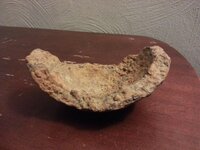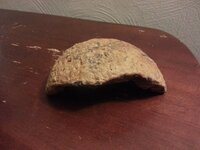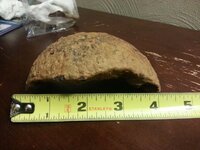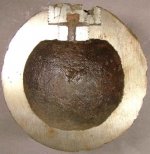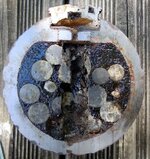Kiros32
Bronze Member
- Feb 21, 2006
- 1,407
- 441
- Detector(s) used
- XP Deus, Whites MXT
- Primary Interest:
- All Treasure Hunting
I was convinced this was shrapnel when I dug it, but now I am not so sure, based simply on the fact that the shell walls are so thin. I couldn't find my calipers, but the width of the wall is only about 1/2 inch. Don't know what else it could be though given it's shape and where it was found. So the question for you sir, is did they make shells with thin walls? And what size do you think this was based on the rough measurements?


